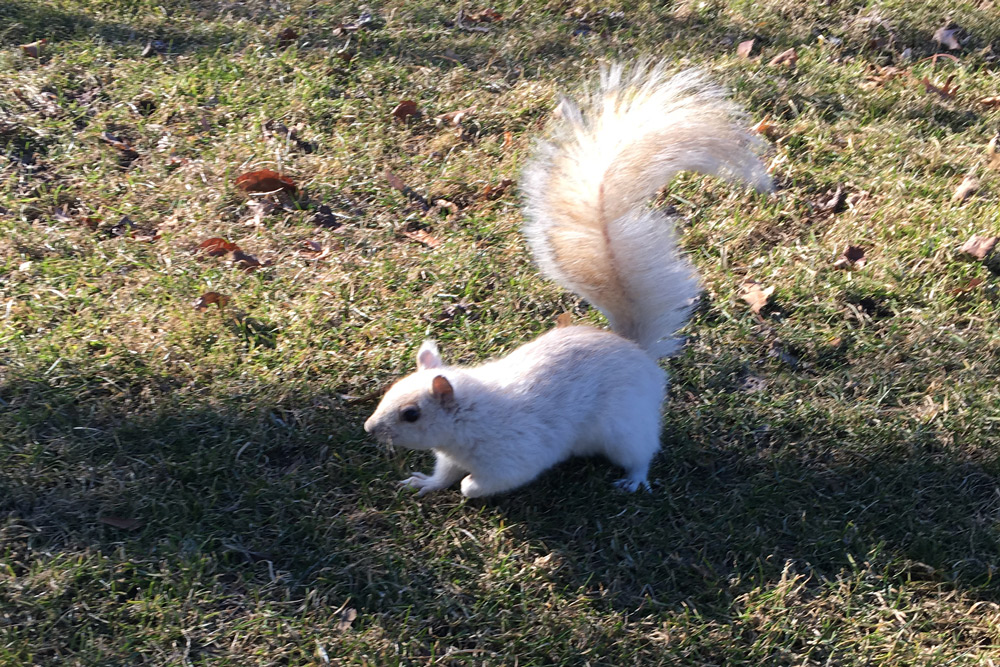Bad freshman year roommates? Close.
For Suffolk University students, the Boston Common is like an extension of campus, an enormous quad stretching out between their classrooms and dorms. Right next door is the Boston Public Garden, home of the famous swan boats, Make Way for Ducklings statues, towering trees, and hundreds of noisy neighbors: a thriving population of gray squirrels.
Just how much does city life — from tourists and food trucks to barking dogs and busy streets — affect these bushy-tailed Bostonians? A group of Suffolk biology students braved rain, snow, and stolen snacks to find out.
Mutual curiosity
During the first day of fieldwork in the Boston Public Garden for his ecology course, biology major Majeed Ghazi felt a strange sensation.
“I was just watching the squirrels, taking notes, and I felt one climbing me! It happened right from the beginning,” he says.
Another ripped a pencil out of classmate Nicoleen Boyle’s hands as she recorded her observations.
The Garden’s squirrels are so accustomed to people — and the food they often bring — that many have lost their natural diffidence. In order to maintain a scientific detachment, students developed a protocol for brushing the more curious critters off of each other. They also learned to avoid eating during observation.
“I took out a granola bar once,” says biology major Ixchel Lopez. “The squirrels recognized the wrapper sound and came running.”




